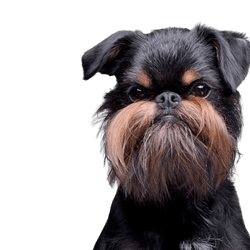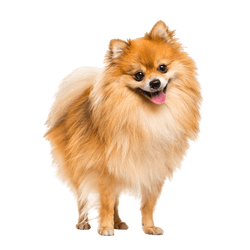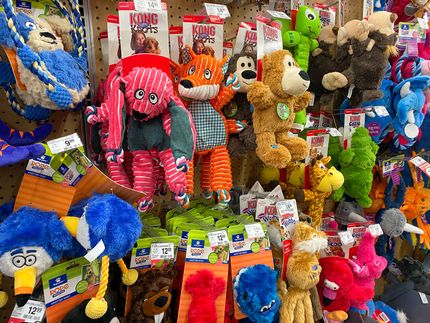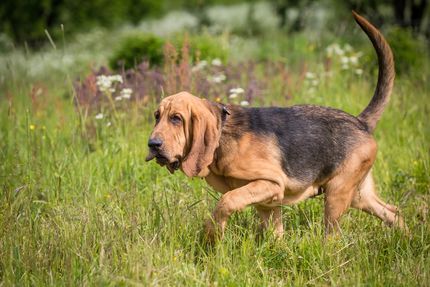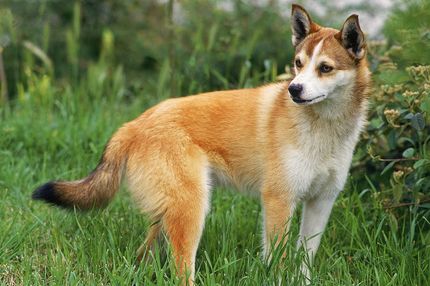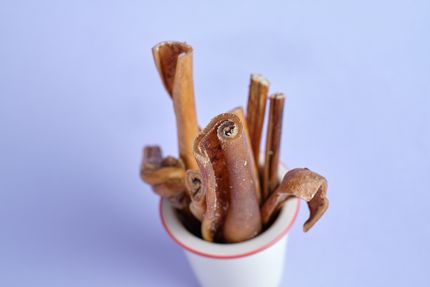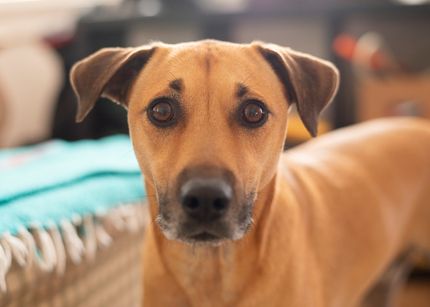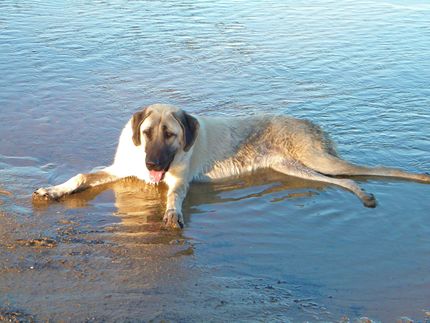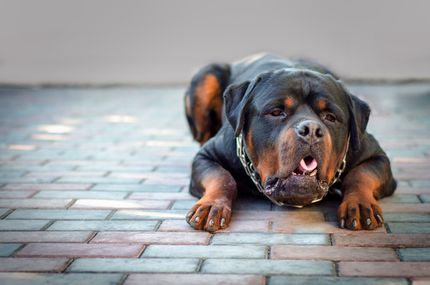Facts & Origin
Brusselranian: The enchanting mix of Griffon Bruxellois and Pomeranian
The Brusselranian, a fascinating mix of Griffon Bruxellois and Pomeranian, convinces with its small size and big heart. With its unique charm and lively nature, it is a perfect little companion.
Origin and history
As a designer dog , the Brusselranian's exact origin is not well documented. However, the parent breeds, the Griffon Bruxellois and the Pomeranian, both have a rich history. The Griffon Bruxellois originated in Belgium and was once the preferred companion of the royal courts of Europe, while the Pomeranian, a member of the Spitz family, originated in Pomerania, a region in northeastern Europe, and is known for its playful and cheeky nature.
Suitability and attitude
The Brusselranian is an excellent companion for anyone looking for a small but energetic dog. He is adaptable and can live just as well in an apartment as he can in a house with a garden. He gets along well with children and other pets, although his small size means he must be carefully supervised to avoid accidental injury.
| Alternate Name | - |
| Origin | Belgium - Germany |
| Life expectancy | 12 - 16 years |
| Care requirements | high-maintenance |
| Activity level | low |
| FCI group | not recognised |
| AKC group | not recognised |
| KC group | not recognised |
More Griffon Bruxellois mixes
More Pomeranian mixes
Attitude, character and temperament of the breed
Possible character traits of the Brusselranian
The Brusselranian is an energetic, curious and loving dog . He is intelligent and a quick learner, although he can sometimes have a stubborn side. However, with proper training and socialization, he is an excellent companion who gets along well with people and other animals. His lively personality and charming nature make him an ideal companion for those looking for a small but lively dog.
Character
Usage
Typical diseases and care
Health-wise, patellar luxation, dental problems and respiratory issues are all possible concerns with the Brusselranian. It is important to have him examined regularly by a veterinarian and to monitor his diet and exercise to minimize these problems.
Grooming the Brusselranian can be intense, as his dense coat needs to be brushed regularly to prevent matting and skin problems. Bathing should only be done when necessary to avoid stripping the natural oils on the skin. Dental hygiene is also important as small dogs are more prone to dental problems.
What does this mongrel look like?
A small but strong dog, the Brusselranian usually weighs between 3 and 5 kg and reaches a shoulder height of 18 to 28 cm. His coat is dense and can be wavy or straight, with colors that can range from black, brown, cream to a mixture of these. His eyes are large and expressive, and his ears are erect, giving him an eternally alert appearance.
Known Diseases
Patellar problems
Problems with the Patellar can be a displacement or weak kneecap, which is one of the most common causes of lameness in dogs, also because of overweight.
Eye diseases
Often occur with allergies and intolerances.
Spinal disorders
However, as the dog ages, this elasticity can be lost and completely inhibited by diseases such as spondylosis.
Breathing problems
Dogs with shortened muzzles can often experience respiratory problems.
Hip dysplasia (HD)
Hip dysplasia (HD) is a genetic condition in dogs where the hip joint is not shaped properly. This leads to pain, stiffness and restricted movement.
Elbow dysplasia (ED)
Elbow joint dysplasia is a chronic disease complex of the elbow joint of fast growing dog breeds.
Numbness
Often occurs in old age.
Heart disease
Can occur frequently in dogs and can sometimes be treated with medication.
Eye infections
Chronic eye infections can be very painful in dogs and can be treated with medication. In rare cases, the cornea must be treated.
Patellar luxation
Patellar luxation is the term used to describe a displacement of the kneecap, which is one of the most common causes of lameness in dogs.
FAQ
-
A Brusselranian is a hybrid dog that comes from a Griffon Bruxellois and a Pomeranian.
-
This mixed breed typically has a short, curly coat in a variety of colors such as brown, black, white or gray, short legs, a drooping tail and a handsome face with large eyes.
-
This hybrid breed is typically intelligent, playful, lively and affectionate. They are also usually very docile and tame.
-
They require moderate attention and care, such as regular brushing of the coat, regular dog trimming and regular cleaning of the ears and eyes.
-
It does not require much space, as they are a small breed. Nevertheless, they need enough run and exercise to stay healthy and happy.
